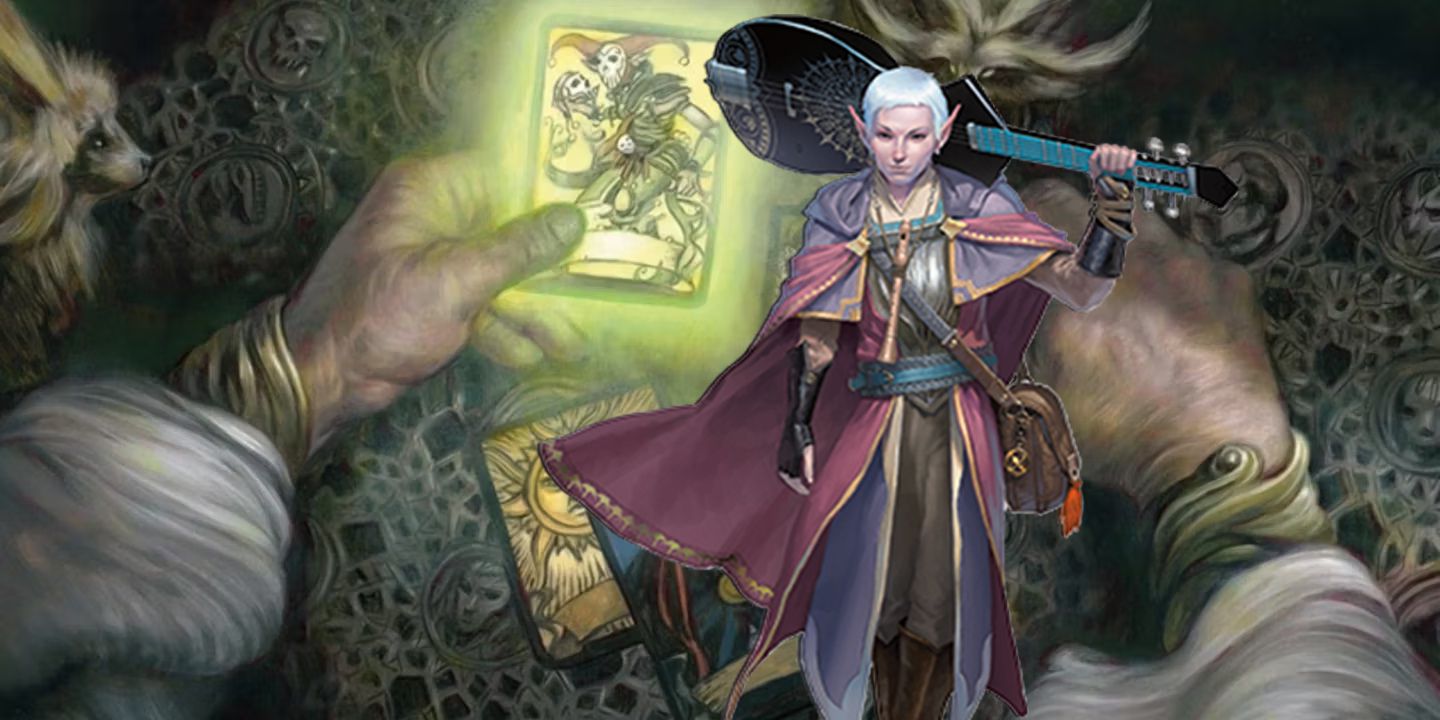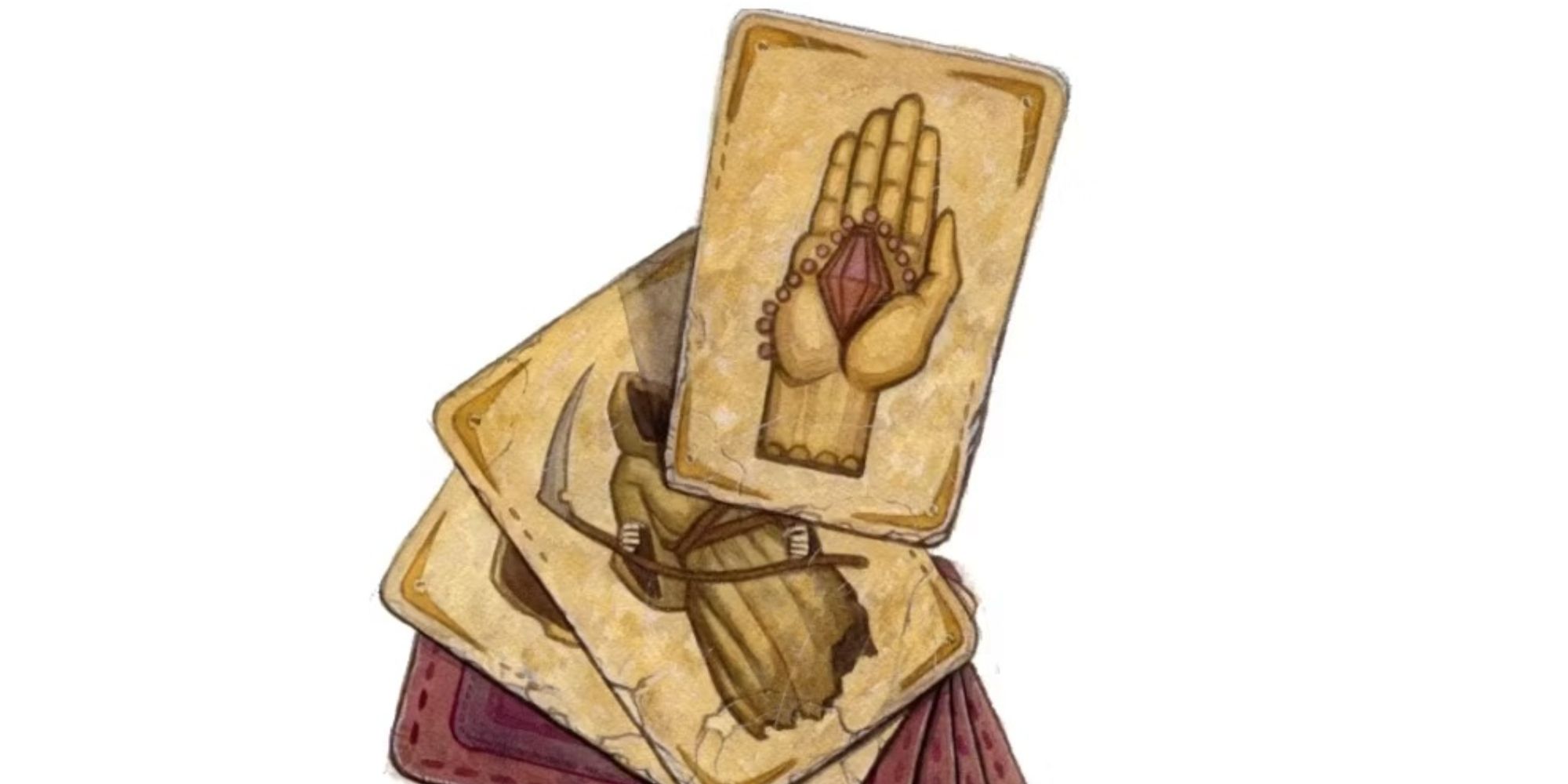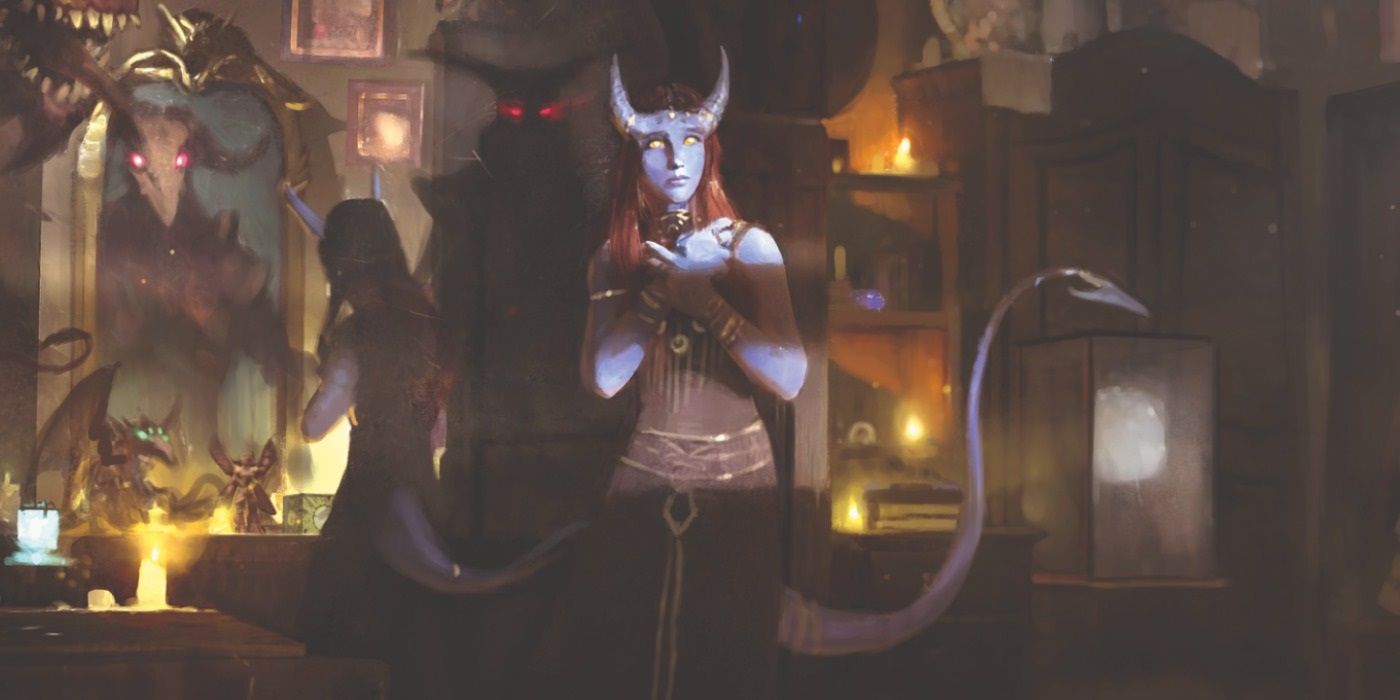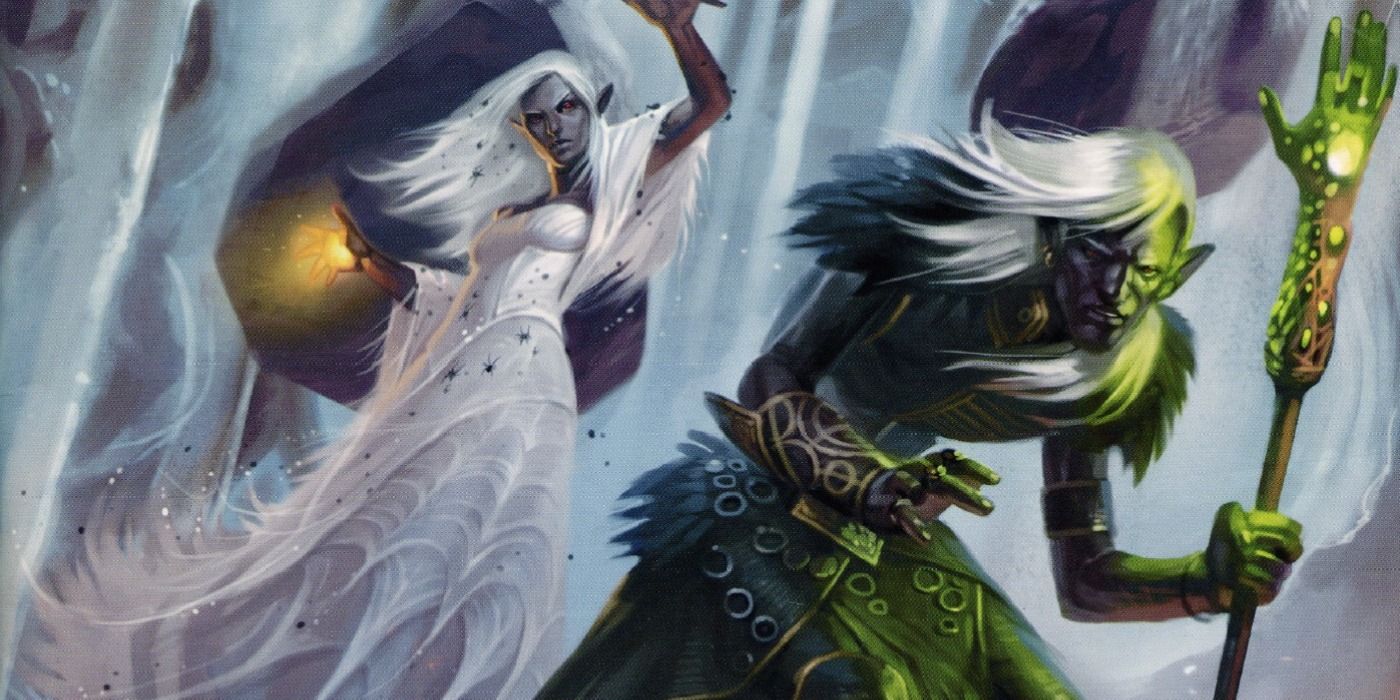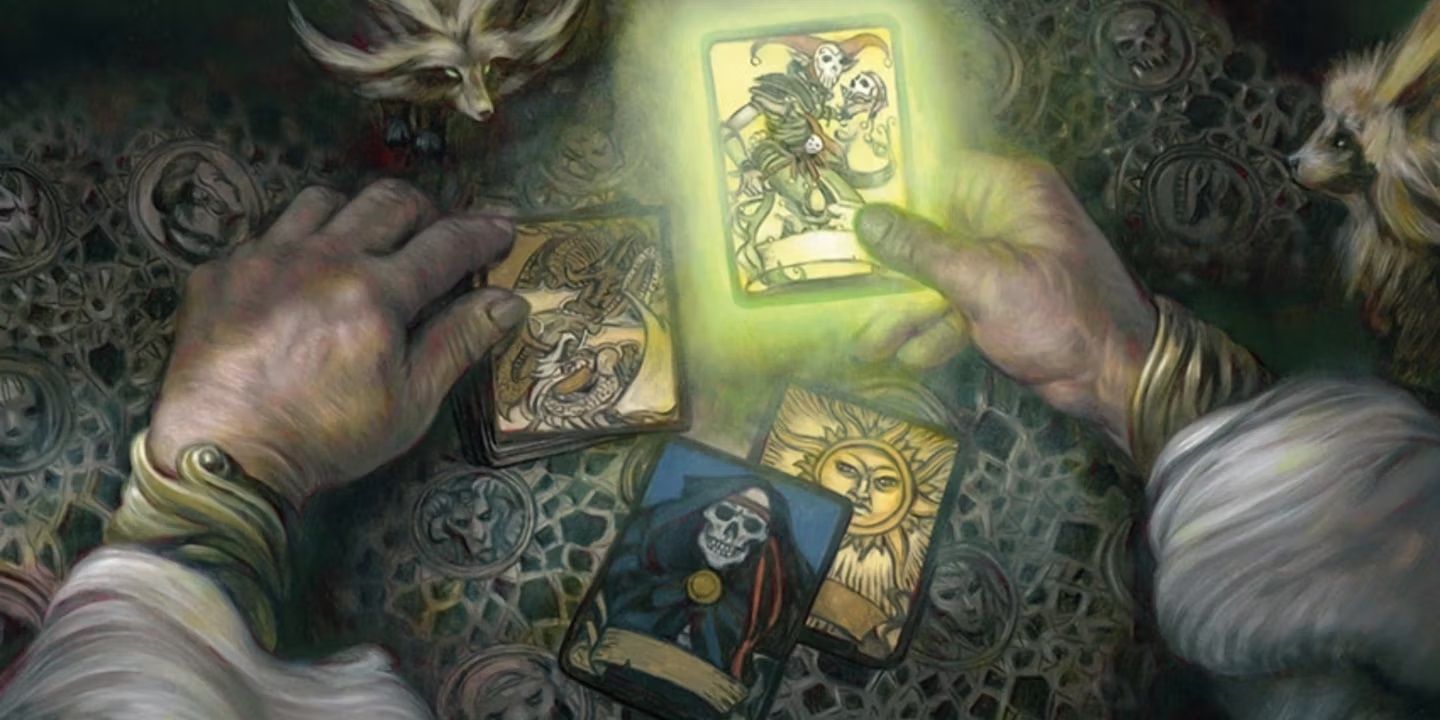Dungeons & Dragons is a game that most associate with rolling dice as a means of resolving disputes, but some players prefer to use cards as their means of determining random chance in their games. D&D groups love their dice and they would probably balk at the idea of totally removing dice rolls from the game, but there are ways to integrate Tarot or playing cards. These cards can be used for flavor or for acting as a representation of a character's chaotic abilities.
The D&D multiverse is home to all manner of magic items, which includes decks of cards. There are also characters who use cards as a means of powering their magic. Spellcasters often use an item known as a focus, such as a cleric channeling their power through a holy symbol that represents their god, or a wizard using a crystal ball to call on magic from beyond. There are also spellcasters who use cards as their focus, putting their fate on their line, as they draw cards and hope for a favorable outcome that empowers their spells.
The D&D players and DMs who want to incorporate cards into their game have lots of options available to them. D&D's useful Tarokka Deck from Curse of Strahd is one option, but other decks work just as well. A character can just give their spellcaster a set of cards as a focus without too much work, but there are ways to tie their cards into their class abilities. The D&D groups with a deck of playing cards or Tarot cards sitting around can dust them off and include them into their game.
Experience The Tension Of A Deck Of Many Things
The Deck of Many Things is one of the most powerful and chaotic magic items in the history of D&D. DMs need to think very carefully before introducing one into their game, as it has the potential to destroy a campaign completely, either through killing the group with bad draws, or through giving them so much riches and power that nothing will be able to challenge them anymore. By the same token, there are few D&D experiences more exciting than finding a deck and letting everyone put their beloved characters on the line, all with the turn of a card.
The Deck of Many Things is one of D&D's oldest magic artifacts, so there are lots of rules for using it in a game. It's possible to run a Deck of Many Things by simply rolling the dice to determine the result, but where is the fun in that? One of the most entertaining ways to use a Tarot or playing card deck in D&D is by using them as a physical representation of the Deck of Many Things. There are actual recreations of the deck available online, with fans making their own versions and selling them on arts & crafts websites, but a deck of standard cards does the job just as well (though they won't help with D&D's Deck of Many Things spells), especially for those who don't want to pay extra just for a single D&D session or a prop that will only be used sparingly. There are few moments as terrifying or exciting for a D&D player as declaring their draws, shuffling the deck, and pulling the card that will determine the future fate of their character.
D&D's College Of Spirits Bard Is Perfect For Using A Deck
Curse of Strahd's use of the Tarokka deck was a great way to introduce card-based elements into D&D 5e. It's fitting that the Tarokka deck would see even more use in the Ravenloft campaign setting - which has appeared in every edition of D&D - as Van Richten's Guide to Ravenloft added D&D subclasses like the College of Spirits for bards, which is ideal for using a deck. The College of Spirits bard receives the Tales From Beyond ability at level 3, allowing them to spend Bardic Inspiration dice to perform a random ability. These effects are told as stories, such as the Tale of Beloved Friends granting temporary hit points to an ally. A player can choose to use a d12 to determine these results, but it's a lot more satisfying to create an actual deck of cards to use with the Tales From Beyond, allowing players to add their own flavor when using its effects. College of Spirits bards can also use a deck as a spellcasting focus, giving an in-universe reason for them to be drawing cards in the middle of battle.
D&D's Diviner Wizard & Wild Magic Sorcerer Could Be Powered By A Deck
The College of Spirits bard has a natural affinity for using cards as part of their abilities, but D&D's Divination school of magic can integrate cards as well. The most natural fit for Tarot cards would be the Diviner wizard, who specializes in Divination. Diviners use their magical abilities to try and see things that are beyond their senses, which includes communing with the gods and even attempting to see the future. Using cards as a medium for this power is a great way to integrate them into the game, with players and the DM trying to fit their results into the game world.
One D&D class that is often the victim of poor luck is the Wild Magic sorcerer, whose arcane failings result in random effects, a gameplay mechanic that's translated to Baldur's Gate 3's Wild Magic as well. It's easy to see why these sorcerers would become obsessed with chaos magic and the luck of the draw, which is why players could draw cards to determine the results whenever there is a Wild Magic Surge. The group could match the results of the Wild Magic Surge table to the cards or even create new ones that better fit the images in the deck, making it much more satisfying/terrifying when the player lifts their card, revealing their effect to the group.
The Future Of Card Magic In D&D
The D&D players who want to incorporate cards into their game might want to wait until next year, as there is an entire book coming out that will cater to their needs. Wizards of the Coast has announced that D&D's Book of Many Things is launching in 2023, which will bring new character options into the game. D&D Senior Story Designer Chris Perkins revealed that the Book of Many Things will contain player content related to the infamous deck. The book will likely include subclasses, magic items, and spells, similar to the other D&D 5e sourcebooks that have been released over the years, though the exact content has yet to be unveiled.
All that is known for sure about the Book of Many Things is its title and the fact that it's coming out next year means that fans will have to speculate for a while longer and hope it doesn't introduce more imbalances to D&D 5e. There are lots of potential options for the book, especially when it comes to card magic. Fans have an idea regarding some content, as there have been the Deck of Many Things spells, introduced in an Unearthed Arcana article which emulates the effects of the deck. These spells include spray of cards, which creates magical cards that strike the enemy, house of cards, which creates a structure that offers cover, and spirit of death, which acts like the Deck of Many Things' Skull card. The Book of Many Things won't be out for a while, but Dungeons & Dragons players have lots of options when it comes to card-based content in their games.

